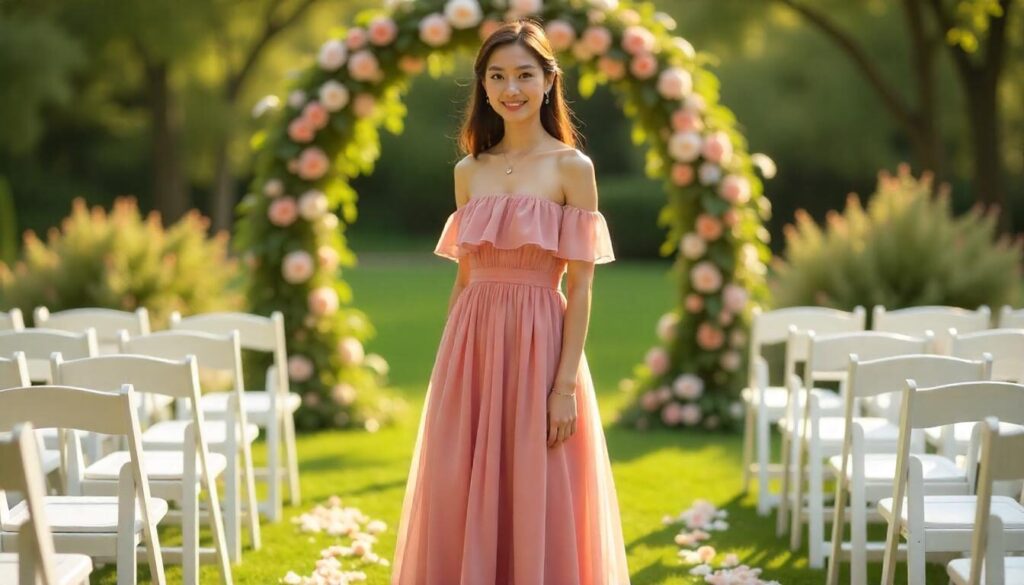Did you know that it takes about 2,500 silkworms to produce just one pound of raw silk? This fascinating fact perfectly illustrates why silk has been considered the queen of fabrics for over 5,000 years. As someone who’s worked with luxury fabrics for years, I can tell you that nothing quite compares to the feeling of slipping into a perfectly crafted silk dresses.
According to recent luxury fashion reports, silk dress sales have increased by 35% in the past year, with sustainable and ethically-sourced silk leading the trend. Whether you’re investing in your first silk dress or adding to your collection, this guide will help you navigate everything from selection to care of these luxurious garments.
Understanding Silk Quality
Let me share something I learned during a textile workshop in Como, Italy – not all silk is created equal! Here’s what you need to know about different types of silk:
Types of Silk Fabric

– Mulberry Silk: The highest quality, known for its smooth texture
– Charmeuse: Features a satin finish with beautiful drape
– Chiffon: Light and sheer, perfect for layered dresses
– Crepe de Chine: Slightly textured with a matte finish
– Dupioni: Features a crisp texture with slight irregularities
– Raw Silk: Has a more textured, natural appearance
Quality Indicators
– Even thread distribution
– Smooth, consistent texture
– Natural sheen without artificial glossiness
– Clean finished seams
– No snags or pulls
– Color consistency throughout
Choosing the Perfect Silk Dress Style
After years of helping clients select silk dresses, I’ve developed a comprehensive guide for different body types and occasions:
For Petite Frames
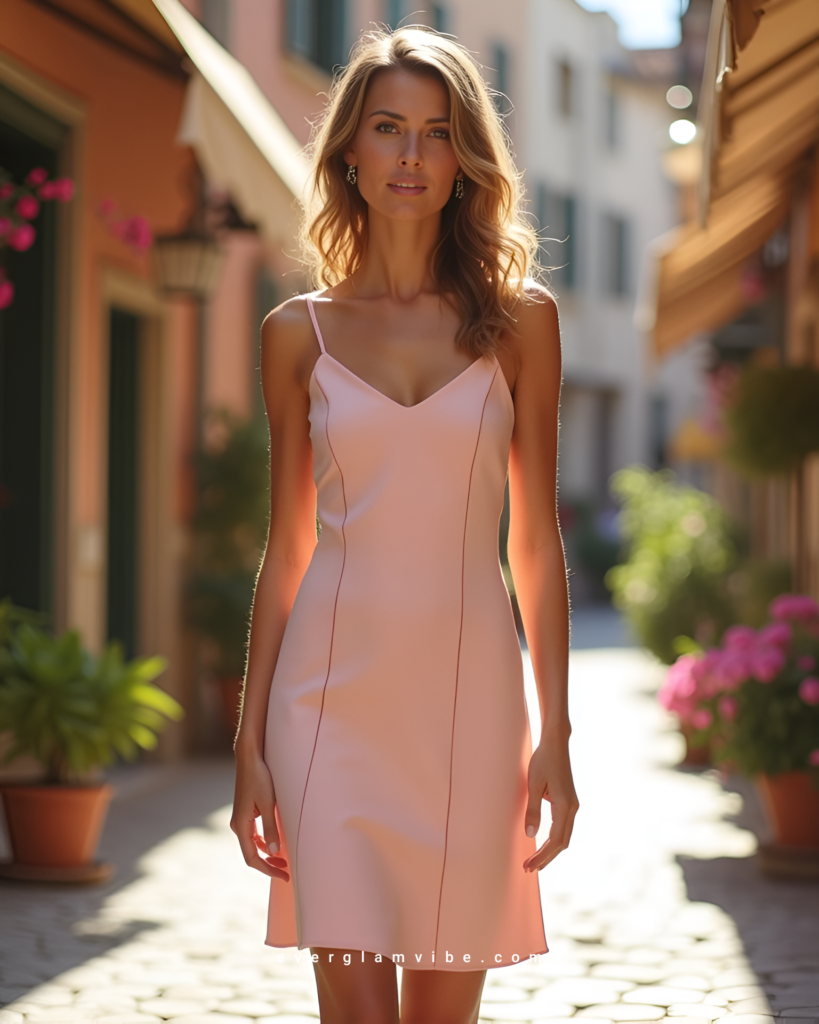
– Choose bias-cut styles that elongate the silhouette
– Opt for knee-length or midi dresses
– Look for vertical seaming details
– Consider A-line silhouettes
– Avoid overwhelming prints or heavy draping
For Tall Figures
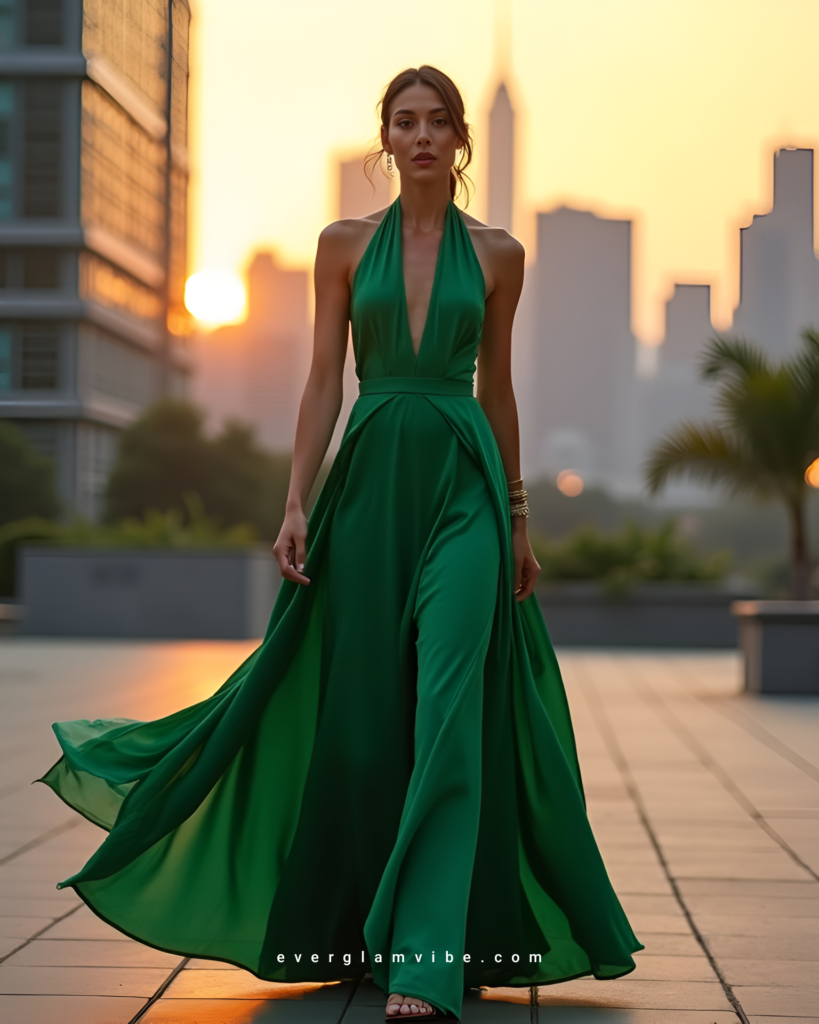
– Experiment with maxi lengths
– Try column dresses
– Consider wrap styles
– Look for interesting hem details
– Play with dramatic cuts
For Curvy Bodies
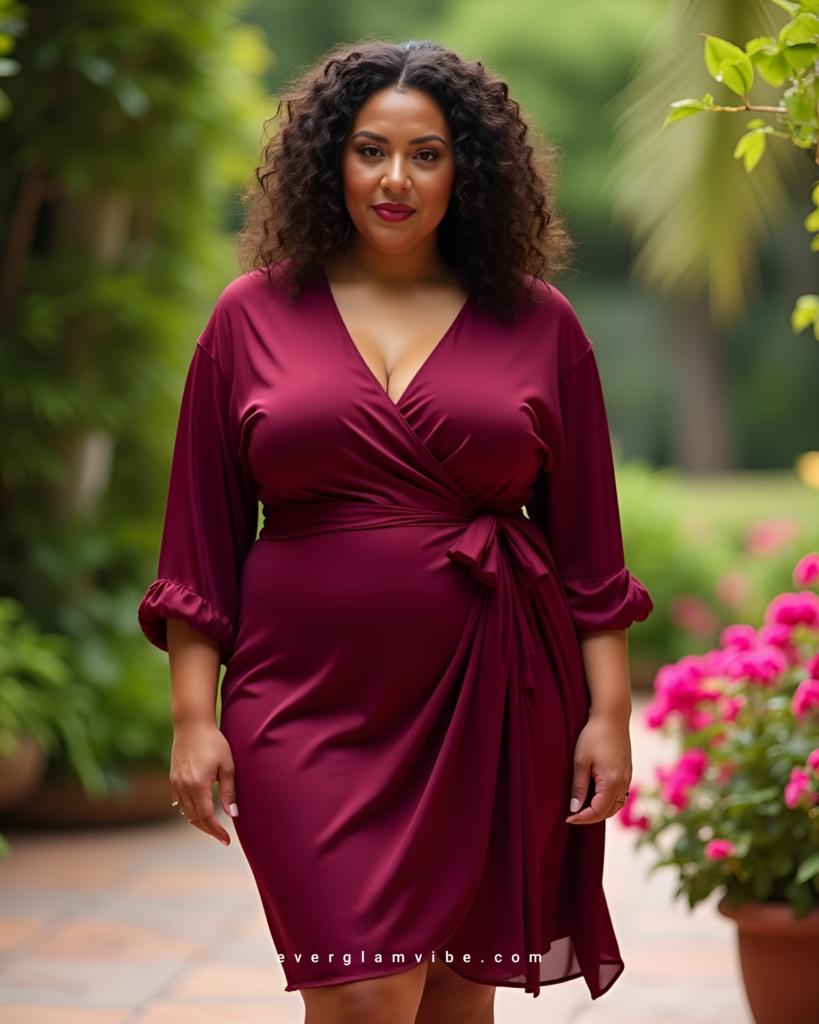
– Focus on wrap dress styles
– Look for strategic seaming
– Choose structured silk fabrics
– Consider A-line cuts
– Opt for solid colors or vertical prints
For Athletic Builds
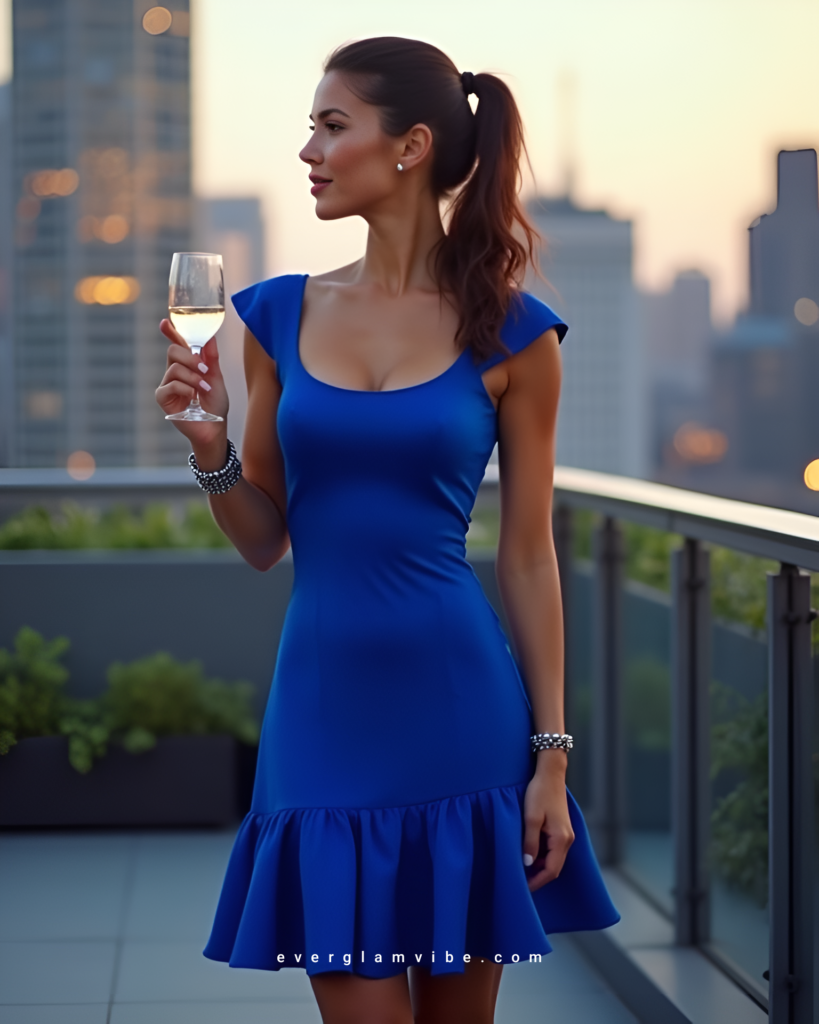
-Choose bias-cut styles to add curves
-halter necklines to highlight shoulders
-ruffles or asymmetrical hemlines for a feminine touch.
-Try pastel shades to balance and soften sharp angles.
Seasonal Styling Guide
Spring Silk Dresses
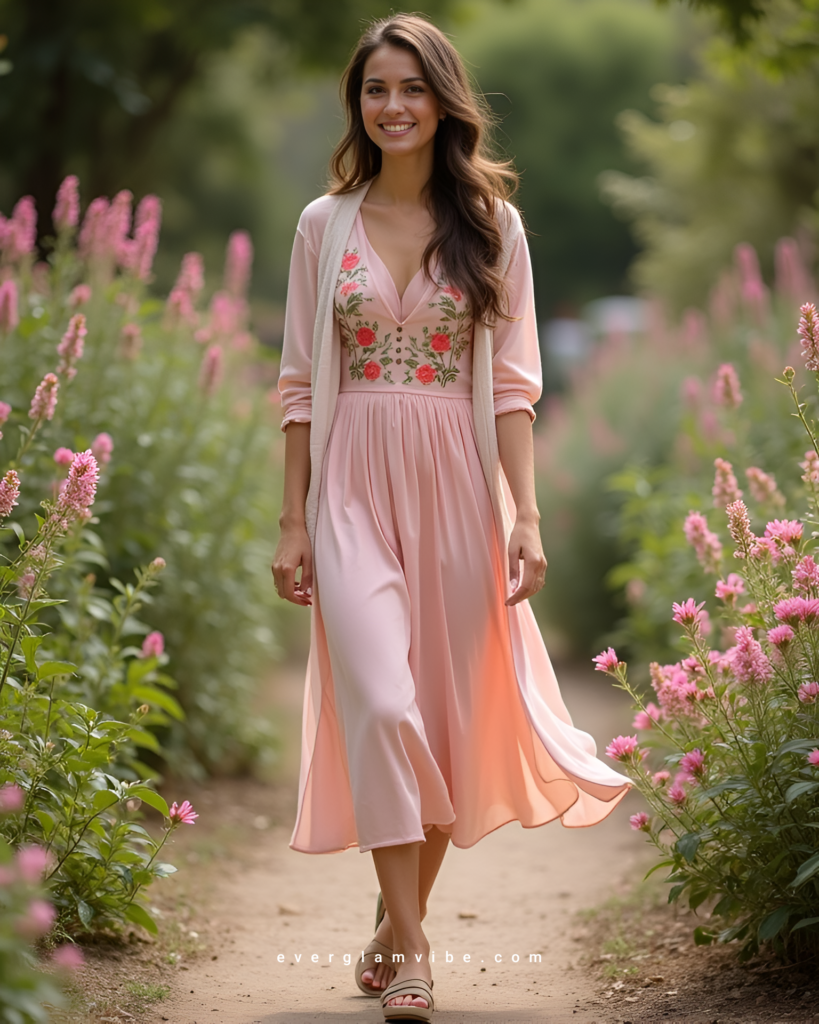
The perfect time to embrace lighter silks:-
Choose pastel colors
– Opt for floral prints
– Layer with light cardigans
– Add delicate jewelry
– Pair with nude sandals
Summer Silk Dresses

Keeping cool while looking elegant:-
Select breathable silk chiffon
– Choose bright, vibrant colors
– Opt for sleeveless styles
– Add minimal accessories
– Consider loose, flowing cuts
Fall Silk Dresses
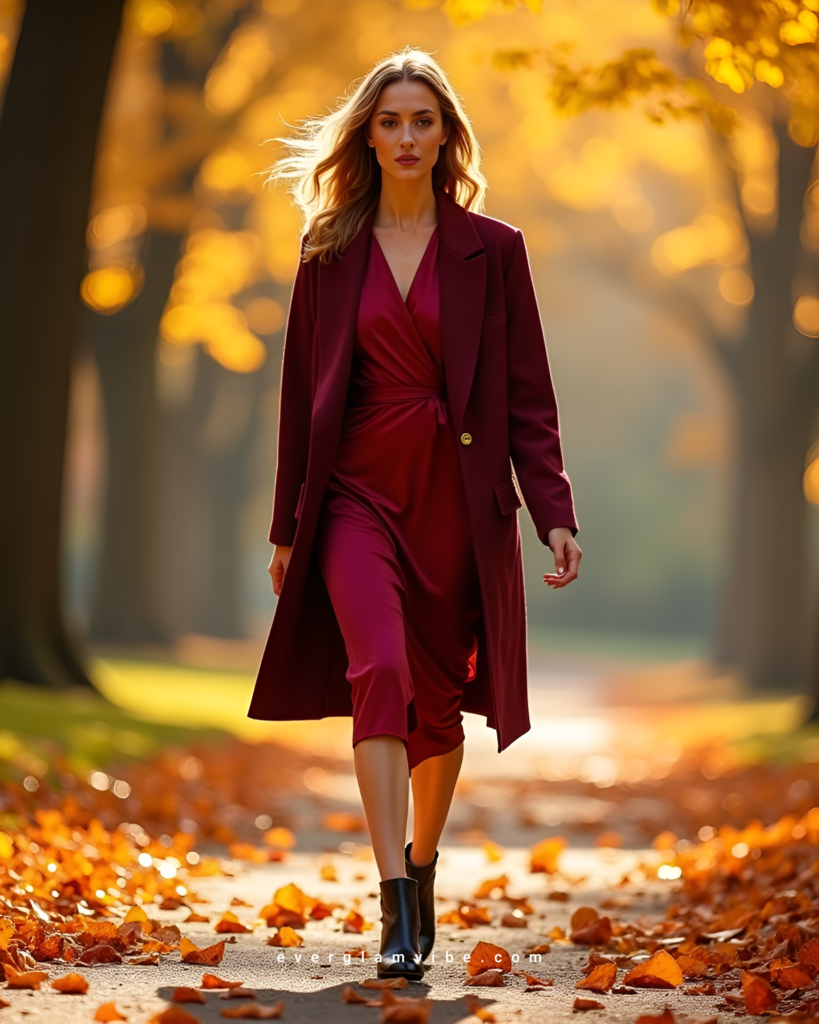
Transitional styling at its finest:-
Layer with fitted blazers
– Choose jewel tones
– Add leather accessories
– Pair with ankle boots
– Consider long sleeve styles
Winter Silk Dresses

Yes, silk works for winter too:-
Layer over thin turtlenecks
– Choose darker colors
– Add cashmere cardigans
– Pair with tall boots
– Consider silk velvet options
Occasion-Specific Styling

Formal Events
– Choose floor-length styles
– Opt for structured silks
– Add elegant jewelry
– Consider deeper colors
– Focus on classic cuts
Office Wear
– Select appropriate lengths
– Choose conservative necklines
– Add structured blazers
– Stick to solid colors
– Consider slip dresses with cardigans
Casual Elegance
– Try silk shirt dresses
– Add leather accessories
– Choose comfortable cuts
– Layer with denim
– Keep accessories minimal
Essential Care Guide
This is crucial – proper care can triple the life of your silk dress!
Washing Instructions
– Always check the care label first
– Hand wash when possible
– Use specialized silk detergent
– Wash in cold water
– Never wring or twist
– Roll in towel to remove excess water
– Lay flat to dry
Storage Tips
– Use padded hangers
– Store in breathable garment bags
– Avoid direct sunlight
– Keep in a cool, dry place
– Never store in plastic
Maintenance
– Steam rather than iron
– Address stains immediately
– Regular professional cleaning
– Check for loose threads
– Store properly between wears
Investment Guide
What to Look For
– Quality of silk (momme weight)
– Construction details
– Lining quality
– Seam finishing
– Brand reputation
Price Points
– Entry-level silk ($150-300)
– Mid-range ($300-800)
– Luxury ($800+)
– Designer ($1000+)
– Couture (varies significantly)
Sustainable Silk
The future of luxury fashion is sustainable:-
Look for peace silk options
– Check for ethical production
– Consider vintage pieces
– Investigate brand practices
– Support sustainable manufacturers
Common Silk Dress Challenges
Problem Solving
– Static cling solutions
– Dealing with water spots
– Removing wrinkles
– Preventing snags
– Color maintenance
Shopping Guide
Where to Buy Quality Silk Dresses
– Luxury department stores
– Specialized boutiques
– Designer shops
– Vintage retailers
– Online luxury platforms
What to Check Before Buying
– Fabric weight and quality
– Seam construction
– Lining materials
– Return policy
– Care requirements
Conclusion
A silk dress is more than just a garment – it’s an investment in timeless elegance. Whether you’re choosing your first silk dress or adding to your collection, remember that quality and care are paramount. The right silk dress can become a cherished piece that brings joy for years to come.
The key is finding the perfect balance between style, functionality, and care commitment. As we move through 2024, we’re seeing more innovative approaches to silk production and styling, making these luxury pieces more accessible and sustainable than ever.
I’d love to hear about your experiences with silk dresses! Share your favorite styling tips or care tricks in the comments below.


